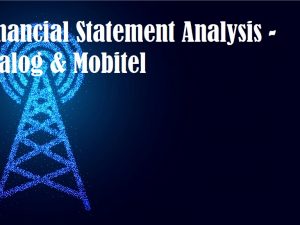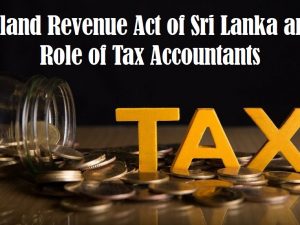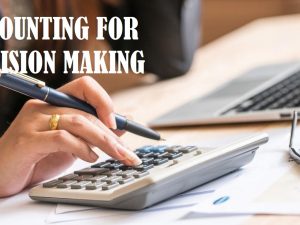Description
Accounting for Decision Markers
A. Select a Company listed in the Colombo Stock Exchange in Sri Lanka and use the latest financial statements from the Annual report published by the selected company to answer the following questions.
1. Accounting can be defined as a systematic process of identifying, recording, classifying, verifying, summarizing, and analyzing financial information of an organization. Briefly, explain the main objective of Accounting? (5 marks)
2. Select three accounting policies used by the company in the preparation of financial statements from the annual report and explain the importance of those policies and the accounting concepts/principles relevant for the same. (10 marks)
3. Using the financial statements of the selected company Calculate liquidity, profitability, efficiency and solvency ratios for the recent two years and write a brief report to the board on the status of financial position and financial performance of the company. (15 marks)
4. If the purchase cost of a tangible fixed asset (Property, Plant & Equipment) is not charged to the income statement in the year of purchase, how can a company recognize expenses relating to these assets in the financial statements? (5 marks)
5. Why might the revenue and cost figures shown on a standard income statement not be representative of the actual cash inflows and outflows that occurred during a period? What is the difference between income and profit? (5 marks)
6. State five stakeholders of a business organization and explain why each of them is interested in affairs of a business organization? (5 marks)
B. Business organizations experience various types of costs and it is very important to analyze costs for business decision making.
- “Marginal cost” is a very important cost concept in business decision making. Explain briefly the meaning of Marginal cost. Why marginal cost is considered as very important in business decision making? What are the main criteria that need to take in to account in determining whether a cost is relevant for business decision making? (5 marks)
2. A summary of a manufacturing company’s budgeted profit statement for its next financial year, when it expects to be operating at 70% of capacity, is given below.
£ £
Seles 7,000 units at £35 245,000
Less:
Direct material 42,000
Direct labour 56,000
Production overhead – fixed 40,000
variable 14,000 152,000
Gross Profit 93,000
Less: admin, selling & distribution costs
fixed 30,000
variable 21,000 51,000
Net profit 42,000
Company has analyzed two more alternatives;
Alternative 1
If the selling price per unit were reduced to £30, the increased demand would utilize 90% of the company’s capacity without any additional fixed cost. Further, it has been estimated that due to the increased volume, direct material cost will reduce to £5 per unit.
Alternative 2
To attract sufficient demand to utilize full capacity would require a 20% reduction in the current selling price and a £5,000 special advertising campaign. Further, it has been estimated that due to the increased volume, direct material cost will reduce to £5 per unit and direct labor cost will reduce to £6 per unit.
Required,
- Calculate the break-even point in units and margin of safety, based on the original budget and explain what is meant by that. (5 marks)
2. Calculate the break-even points and profits which would result from each of the two alternatives and compare them with the original budget stating clearly the best option for the company? (5 marks)
3. Sketch a profit-volume graph from the above information showing clearly the three options analyzed by this organization. (5 marks)
4. Explain the meaning of “limiting factor decision making” under CVP analysis and the process of selecting the best production mix stating clearly the other factors that should be considered in such a condition. (5 marks)
C. “Capital Investment Decision is probably the most important decision for an organization”.
- Explain the meaning of the above statement clearly stating the meaning and the importance of capital investment decision. What are the other key finance decisions related to capital investment decision? (5 marks)
2. Biosis Pty Ltd (BPL) has the opportunity to invest in two mutually exclusive investment projects. Project “A” would cost $250,000 and provide net after-tax cash benefits of $70,000 a year for five years. Project “B” would cost $150,000 and provide net after-tax cash benefits of $47,000 a year for five years.
BPL’s cost of capital is 12%. For each project, compute the net present value (NPV), internal rate of return (IRR) and pay-back period (PBP). Recommend which project should be accepted. (5 marks)
3. Critically explain the limitations of using Accounting Rate of Return (ARR) and pay-back period (PBP) as project evaluation techniques and explain why IRR is useful to compare projects. (5 marks)
D. A budget could be defined as “a quantified plan of action relating to a given period of time”.
- Preparation of budgets important for all the organizations and critically explain the main purposes of preparing budgets with examples. (5 marks)
2. The following information relates to Victory (Pvt) Limited. Forecasted Income and expenses of the company for the next six month of the operation are as follows.
Month Sales Purchases Salaries Overhead
£ £ £ £
January 4,000 2,500 300 600
February 5,500 3,000 450 700
March 8,000 5,000 600 900
April 10,000 6,000 800 1,200
May 13,000 8,000 1,000 1,500
June 18,000 10,000 1,400 1,800
The following additional information is also available for you.
- 20% of the sales will be on cash basis and the balance will be on credit. Credit sales will be recovered in the second month following the month of sale.
- 10% of the purchases will be on cash while the balance will be on credit basis. Credit purchases will be settled in the month following the month of purchase.
- Salaries will be paid within the month they are incurred.
- All overhead expenses are paid in the month of incurring such expenses. Overhead expenses include monthly depreciation charges amounting to £100.
- Company is planning to sell an old machine for £ 500 in the month of April. A new machine will be purchased in April for £ 10,000 and 50% of the purchase cost will be paid in the same month and the balance will be paid in the following month.
- Company is planning to obtain a bank loan of £5,000 in April to finance part of the purchase cost of machine.
- Cash balance of the company as at 31st March is estimated to be £ 1,500.
From the above information, you are required to prepare the cash budget of Victory (Pvt) Limited for the months April to June on monthly basis. Give a brief interpretation about the cash position of the company.
(5 marks)
3. What is meant by “Incremental Budgeting” approach in developing the budgets for an organization? Explain the advantages and disadvantages of this approach and any alternative approaches available to an organization to minimize the disadvantages. (5 marks)





